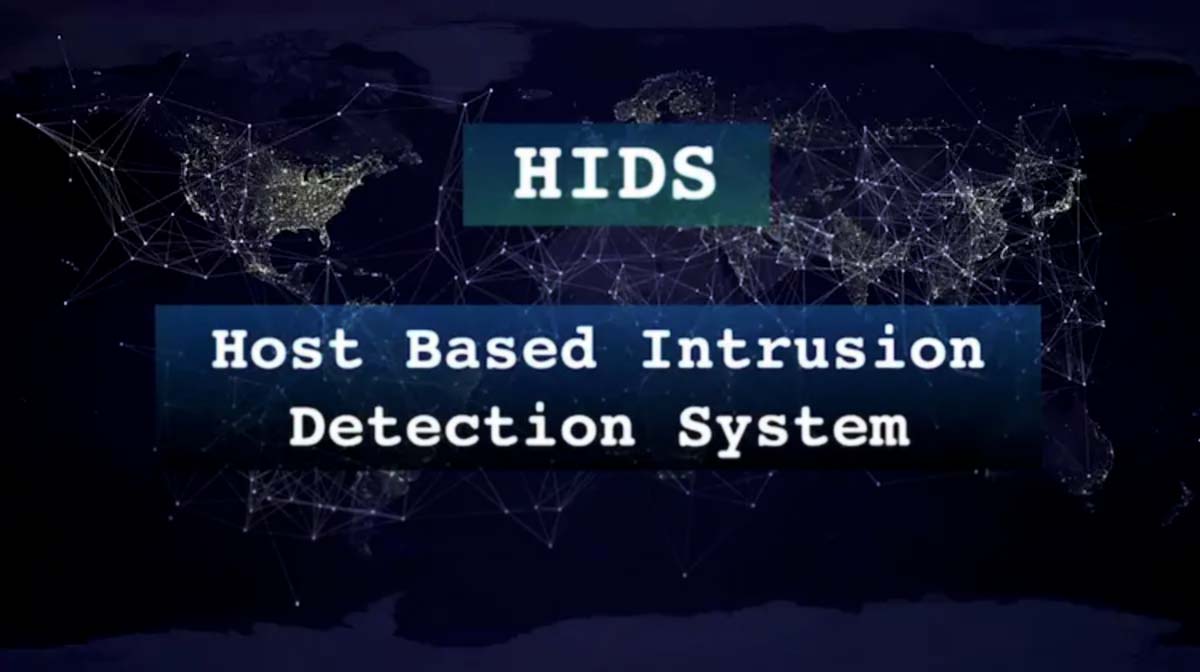Home>Home Security and Surveillance>How Will An Intrusion Detection System Alert On Pivot Method


Home Security and Surveillance
How Will An Intrusion Detection System Alert On Pivot Method
Modified: March 6, 2024
Find out how an intrusion detection system can alert you to potential security threats using the pivot method. Enhance your home security and surveillance with this effective technology.
(Many of the links in this article redirect to a specific reviewed product. Your purchase of these products through affiliate links helps to generate commission for Storables.com, at no extra cost. Learn more)
Introduction
Welcome to the world of home security and surveillance! In today’s fast-paced and interconnected society, protecting our homes and loved ones has become increasingly important. Security technology has advanced by leaps and bounds, offering us a wide range of options to ensure the safety of our homes and provide peace of mind.
One crucial component of a comprehensive home security system is an Intrusion Detection System (IDS). An IDS is designed to detect and alert homeowners to any unauthorized access or suspicious activity within their property. It acts as a vigilant guardian, continuously monitoring the premises and swiftly responding to potential security threats.
But how exactly does an IDS work? In this article, we will explore the fascinating world of IDS and delve into how it alerts homeowners using the pivot method. The pivot method is a technique used by IDS to detect and track suspicious activities within a network. By understanding the intricacies of this method, we can better appreciate the effectiveness of IDS in securing our homes.
So, let’s dive in and uncover the inner workings of an IDS and its alert system using the pivot method!
Key Takeaways:
- Intrusion Detection Systems (IDS) act like vigilant guardians for home networks, using advanced techniques like pattern matching and machine learning to detect and alert homeowners about potential security threats, ensuring safety and peace of mind.
- IDS systems face challenges in detecting pivot-based attacks due to encrypted traffic and evasive tactics by attackers. Continuous advancements in IDS technology, including behavioral analysis and threat intelligence integration, are essential for overcoming these challenges and strengthening home network security.
Read more: How To Test Intrusion Detection System
What is an Intrusion Detection System (IDS)?
An Intrusion Detection System (IDS) is a critical component of home security and surveillance setups. It is a software or hardware-based system that monitors and analyzes network traffic to identify any unauthorized or suspicious activity. The primary goal of an IDS is to detect and alert homeowners of potential security breaches in real-time, allowing for swift response and mitigation.
IDS can be classified into two main types: network-based IDS and host-based IDS. Network-based IDS monitors network traffic, analyzing packets and headers to detect any anomalies or intrusion attempts. On the other hand, host-based IDS focuses on individual devices and their activity, monitoring system logs, file changes, and user behavior to identify any suspicious actions.
The core functionality of an IDS revolves around collecting and analyzing data to identify patterns and anomalies that may indicate an intrusion. This is done by comparing the observed network or host behavior against a known set of attack signatures or predefined rules. IDS can also employ machine learning techniques to continuously adapt and improve their detection capabilities.
When an IDS detects a potential intrusion, it generates an alert to notify homeowners or security personnel. These alerts can be in the form of email notifications, text messages, or even phone calls, ensuring that homeowners are promptly informed about any security threats. Some advanced IDS systems also integrate with security camera systems, allowing users to visually monitor the situation and take appropriate action.
The effectiveness of an IDS depends on its ability to accurately identify and distinguish between normal and abnormal network behavior. IDS must strike a balance between avoiding false positives (flagging legitimate activities as threats) and false negatives (failing to detect actual security breaches). This delicate balance is achieved through a combination of advanced algorithms, machine learning, and constant updates to the IDS software and attack signature database.
Overall, an IDS is a vital component of a comprehensive home security system. It acts as a watchful guardian, constantly scanning network traffic and host activity for any signs of unauthorized access or suspicious behavior. By employing sophisticated detection techniques, IDS enables homeowners to proactively protect their homes and loved ones from potential security threats.
How does an IDS Alert on Pivot Method?
The pivot method is a technique employed by Intrusion Detection Systems (IDS) to detect and track suspicious activities within a network. It involves analyzing the flow of network traffic and identifying certain patterns that indicate the presence of a pivot, which is an attacker using compromised systems to gain access to other parts of the network.
When an IDS detects a potential pivot, it triggers an alert to notify homeowners or security personnel. This alert is essential as it allows for immediate action to be taken to mitigate the potential security breach and prevent further unauthorized access.
There are several ways in which an IDS alerts on the pivot method:
- Identifying unusual traffic patterns: An IDS continuously monitors network traffic to identify any abnormal patterns or deviations from the norm. When a pivot occurs, it often leads to a sudden increase in traffic or unusual communication patterns between different systems. The IDS uses advanced algorithms and statistical analysis to detect these anomalies and trigger an alert.
- Recognizing unusual system behavior: In addition to monitoring network traffic, an IDS also analyzes the behavior of individual systems within the network. A pivot may involve a compromised system behaving differently from its normal operational parameters, such as unusual logins, unauthorized access attempts, or abnormal data transfers. The IDS recognizes these anomalies and generates an alert.
- Tracking lateral movement: A key aspect of the pivot method is lateral movement, where an intruder moves from one compromised system to another. An IDS analyzes the flow of network traffic and looks for suspicious connections or unusual data transfers between systems. By tracking this lateral movement, the IDS can identify the presence of a pivot and alert homeowners to take action.
- Integrating with threat intelligence: IDS systems often integrate with threat intelligence feeds, which provide up-to-date information on known attack vectors and malicious IP addresses. When a pivot occurs, the IDS compares the observed activity against this threat intelligence data. If any suspicious connections or IP addresses associated with known malicious actors are detected, the IDS triggers an alert.
Once an IDS alerts on the pivot method, it is crucial for homeowners or security personnel to take immediate action. This may involve blocking suspicious connections, isolating compromised systems, or conducting a thorough investigation to identify the extent of the security breach.
By leveraging the pivot method, IDS significantly enhances the security posture of a home network. It enables homeowners to detect and respond to potential pivots, thwarting the progress of attackers and safeguarding the integrity of their network and data.
Common Techniques used by IDS for Pivot Method Detection
When it comes to detecting the pivot method, Intrusion Detection Systems (IDS) employ a variety of techniques to identify network intrusions and track the lateral movement of attackers. These techniques play a crucial role in enhancing the security of home networks. Let’s explore some of the common techniques used by IDS for pivot method detection:
- Pattern Matching: IDS systems utilize pattern matching algorithms to compare observed network traffic against a database of known attack signatures. When a pivot occurs, the IDS looks for specific patterns in network communication that match those of previous attacks. If a match is found, the IDS triggers an alert to notify homeowners or security personnel.
- Anomaly Detection: Anomaly detection is another important technique employed by IDS to identify pivot-based attacks. This technique involves establishing a baseline of normal network behavior and continuously monitoring for any deviations from this baseline. When an IDS detects abnormal traffic patterns or unusual system behavior indicative of a pivot, it generates an alert.
- Protocol Analysis: IDS systems often perform in-depth protocol analysis to identify pivots. They analyze the headers, packets, and payload of network traffic to extract valuable information about the communication protocols being used. By identifying anomalies in protocol usage or unexpected interactions between systems, an IDS can flag potential pivot activities.
- Behavioral Profiling: Behavioral profiling is a technique where an IDS builds profiles of normal network behavior based on historical data. The IDS continuously monitors network traffic and compares the observed behavior against these profiles. If a pivot occurs, resulting in abnormal network activity, the IDS can detect the anomaly and generate an alert.
- Machine Learning: IDS systems often employ machine learning algorithms to enhance their detection capabilities. These algorithms can learn from past network traffic data and identify subtle patterns or anomalies that may indicate a pivot. As the IDS continues to analyze network traffic, it can adapt and refine its detection methods based on the insights gained through machine learning.
It’s important to note that IDS systems typically utilize a combination of these techniques to provide comprehensive detection and protection against pivot-based attacks. By leveraging pattern matching, anomaly detection, protocol analysis, behavioral profiling, and machine learning, IDS systems can effectively detect and respond to potential security breaches in home networks.
However, it’s worth mentioning that attackers are constantly evolving their tactics, and IDS systems need to stay updated to keep pace with these evolving threats. Regular updates to attack signature databases and maintaining awareness of emerging attack vectors are essential to ensuring the effectiveness of IDS in pivot method detection.
By utilizing these common techniques, IDS systems add an extra layer of security to home networks, allowing homeowners to have peace of mind knowing that their systems are continuously monitored and protected against potential pivot-based attacks.
An Intrusion Detection System can alert on the pivot method by monitoring for unusual lateral movement within the network, such as a sudden increase in access to different systems or abnormal authentication patterns.
Challenges in detecting Pivot Method
The pivot method, used by attackers to gain unauthorized access to different parts of a network, presents several challenges for the effective detection and prevention of security breaches. Intrusion Detection Systems (IDS) face specific hurdles when it comes to detecting the pivot method. Let’s explore some of the key challenges:
- Encrypted Traffic: With the widespread use of encryption protocols such as SSL/TLS, attackers can easily hide their malicious activities within encrypted network traffic. IDS systems face difficulty in analyzing the content of encrypted packets, making it challenging to detect pivot-based attacks hiding behind encryption.
- Evasive Techniques: Attackers deploy various evasion techniques to bypass IDS detection. They may fragment their attacks across multiple packets, use stealthy communication channels, or employ encryption to obfuscate their activities. These evasive techniques can make it harder for IDS systems to identify pivot-based attacks.
- False Positives and False Negatives: IDS systems strive to strike the right balance between minimizing false positives (flagging normal activities as threats) and false negatives (missing actual security breaches). Achieving this balance is challenging, as overly sensitive IDS may generate numerous false positives, while less sensitive IDS may miss genuine attacks.
- Complex Network Environments: Large and complex network infrastructures pose challenges for detecting pivot-based attacks. In such environments, identifying anomalous behaviors and distinguishing legitimate lateral movement from malicious pivoting can be daunting. The IDS must be able to accurately map the network architecture and identify the control points for effective detection.
- Advanced Persistent Threats (APTs): APTs are sophisticated, targeted attacks that specifically aim to evade and circumvent traditional security measures. Attackers utilizing the pivot technique in APTs are skilled at disguising their activities to avoid detection by IDS systems. Their prolonged and stealthy presence in the network poses considerable challenges for timely and accurate detection.
To address these challenges and strengthen the detection of pivot-based attacks, IDS systems require continuous updates and advancements. This includes implementing advanced techniques like behavioral analysis, machine learning, and AI algorithms to identify subtle patterns, detect unknown attacks, and adapt to evolving threats.
Additionally, collaboration and information sharing among security professionals, researchers, and industry stakeholders play a crucial role. Sharing insights, attack signatures, and indicators of compromise allows for a collective defense approach, bolstering the ability of IDS systems to detect and mitigate pivot-based attacks across different networks.
Overall, while detecting pivot-based attacks presents challenges, continuous advancements in IDS technology, combined with collaboration and knowledge exchange, can help overcome these hurdles and strengthen the security posture of home networks.
Read more: How To Create Intrusion Detection System
Enhancements to IDS for Improved Pivot Method Detection
Intrusion Detection Systems (IDS) play a critical role in securing home networks by detecting and preventing pivot-based attacks. To improve the detection capabilities of IDS and effectively counter the evolving tactics of attackers, several enhancements have been developed. Let’s explore some of these enhancements:
- Behavioral Analysis: Traditional IDS systems rely on signature-based detection, which matches observed network activity against known attack patterns. However, attackers continuously develop new techniques to evade signature-based detection. Behavioral analysis enhances IDS by monitoring and analyzing network traffic for anomalous patterns, identifying deviations from normal behavior that may indicate a pivot. This approach allows for the detection of unknown or zero-day attacks.
- Machine Learning: Machine learning algorithms can significantly enhance IDS capabilities. By training models on large datasets of network traffic, IDS systems can learn to recognize patterns and anomalies that are difficult for traditional rule-based systems to detect. Machine learning enables IDS to adapt and evolve, improving the accuracy of pivot method detection over time.
- Threat Intelligence Integration: Integrating IDS systems with threat intelligence feeds provides real-time information on emerging threats, known attack vectors, and malicious IP addresses. This integration allows IDS to correlate observed network activity with information from trusted sources, improving the accuracy of pivot method detection and reducing false positives.
- Deep Packet Inspection: Deep packet inspection (DPI) is a technique that enables IDS to analyze the contents of network packets at a granular level. DPI goes beyond simple header analysis and allows for the inspection of payload data. This enhancement enables IDS to detect pivot-based attacks that may be hidden within the encrypted traffic or obfuscated by attackers.
- Collaborative Threat Sharing: Sharing threat intelligence and attack data among IDS systems and security communities enhances the collective defense against pivot-based attacks. By building a collaborative ecosystem, IDS can benefit from the collective knowledge and insights of security professionals and researchers. This collaboration enables faster detection and response to emerging pivot method threat vectors.
Furthermore, regular updates and patches to IDS systems are crucial for maintaining their effectiveness. These updates ensure that the IDS can detect the latest attack techniques and vulnerabilities. Additionally, continuous monitoring and assessment of the IDS performance enable timely identification of gaps or shortcomings, facilitating the implementation of necessary improvements.
It’s important to note that while these enhancements improve pivot method detection, they are not foolproof. Attackers are constantly evolving their tactics, creating new evasion techniques, and exploiting vulnerabilities. Therefore, a multi-layered security approach that combines different security solutions, including firewalls, antivirus software, and network segmentation, is recommended to complement IDS.
By integrating behavioral analysis, machine learning, threat intelligence, DPI, and collaborative threat sharing, IDS systems can significantly enhance their pivot method detection capabilities. These enhancements enable homeowners to stay one step ahead of attackers and better protect their home networks from malicious activities.
Case Studies on IDS Detection of Pivot Method
Real-life case studies highlight the effectiveness of Intrusion Detection Systems (IDS) in detecting and preventing pivot-based attacks. Let’s explore a couple of noteworthy case studies that showcase the successful detection of pivot methods:
Case Study 1: Retail Network Security
In a large retail network consisting of multiple branches, an IDS was deployed to monitor network traffic and protect against potential security breaches. The IDS employed behavioral analysis and machine learning techniques to detect anomalies and identify pivot-based attacks.
During the monitoring phase, the IDS detected a sudden spike in network traffic between two branches that was abnormal compared to usual communication patterns. The IDS flagged this activity as a potential pivot and generated an immediate alert.
Upon investigation, it was discovered that a compromised system in one branch was being used as a launching pad to gain unauthorized access to another branch. The IDS had successfully detected the lateral movement and identified the pivot, enabling the security team to isolate the compromised system and prevent further unauthorized access.
Case Study 2: Financial Institution Security
A high-profile financial institution implementing stringent security measures utilized an IDS to protect its critical network infrastructure. The IDS integrated threat intelligence feeds from trusted sources to enhance its detection capabilities.
One day, the IDS alerted on a potential pivot method. It highlighted an anomaly in network traffic where a system within the network was communicating with a known malicious IP address. This incoming traffic was identified as part of a pivot attempt to gain unauthorized access to sensitive financial systems.
Thanks to the threat intelligence integration, the IDS was able to correlate the observed traffic with the reputation of the malicious IP address. The security team swiftly initiated incident response measures, blocking the communication and containing the threat before any sensitive data could be compromised.
These case studies demonstrate the effectiveness of IDS in detecting pivot-based attacks and protecting critical networks. By leveraging behavioral analysis, machine learning, and threat intelligence integration, IDS systems provide valuable insights into network activity, allowing for prompt detection and mitigation of security breaches.
It’s worth noting that the effectiveness of IDS relies on continuous monitoring, regular updates, and skilled personnel who can interpret and respond to the alerts generated by the system. These factors are essential for ensuring the optimal performance of IDS in detecting pivot methods and safeguarding networks.
Through ongoing research, development, and real-world utilization, IDS continues to evolve and improve its pivot method detection capabilities, enabling homeowners and organizations to stay ahead of attackers and protect their networks from malicious activities.
Conclusion
Home security and surveillance are paramount in today’s interconnected world. Intrusion Detection Systems (IDS) play a vital role in protecting our homes by detecting and preventing pivot-based attacks, where attackers use compromised systems to gain unauthorized access to other parts of the network.
In this article, we explored the fundamentals of IDS and how it effectively alerts homeowners on the pivot method. We discussed the common techniques used by IDS for pivot method detection, including pattern matching, anomaly detection, protocol analysis, behavioral profiling, and machine learning. These techniques enhance the ability of IDS to identify suspicious activities, detect abnormal traffic patterns, and track lateral movement within a network.
However, detecting pivot-based attacks is not without its challenges. Encrypted traffic, evasive techniques employed by attackers, false positives and negatives, complex network environments, and advanced persistent threats present hurdles for IDS systems. Overcoming these challenges requires continuous advancements in IDS technology, including enhancements such as behavioral analysis, machine learning, threat intelligence integration, deep packet inspection, and collaborative threat sharing.
We also explored case studies that highlighted the successful detection of pivot method attacks by IDS systems in real-world scenarios. These case studies demonstrated the effectiveness of IDS in identifying anomalies, alerting security teams, and enabling swift response to mitigate potential security breaches.
In conclusion, IDS systems are invaluable in securing home networks and providing peace of mind to homeowners. By leveraging advanced detection techniques and staying abreast of emerging threats, IDS can effectively detect and prevent pivot-based attacks. Regular updates, ongoing monitoring, and skilled personnel are crucial for maintaining the effectiveness of IDS systems.
As technology continues to advance and attackers become more sophisticated, IDS will continue to evolve and improve its pivot method detection capabilities. By staying proactive, adapting to emerging threats, and implementing a multi-layered security approach, homeowners can create a robust defense against pivot-based attacks, ensuring the safety and security of their homes and loved ones.
Frequently Asked Questions about How Will An Intrusion Detection System Alert On Pivot Method
Was this page helpful?
At Storables.com, we guarantee accurate and reliable information. Our content, validated by Expert Board Contributors, is crafted following stringent Editorial Policies. We're committed to providing you with well-researched, expert-backed insights for all your informational needs.














